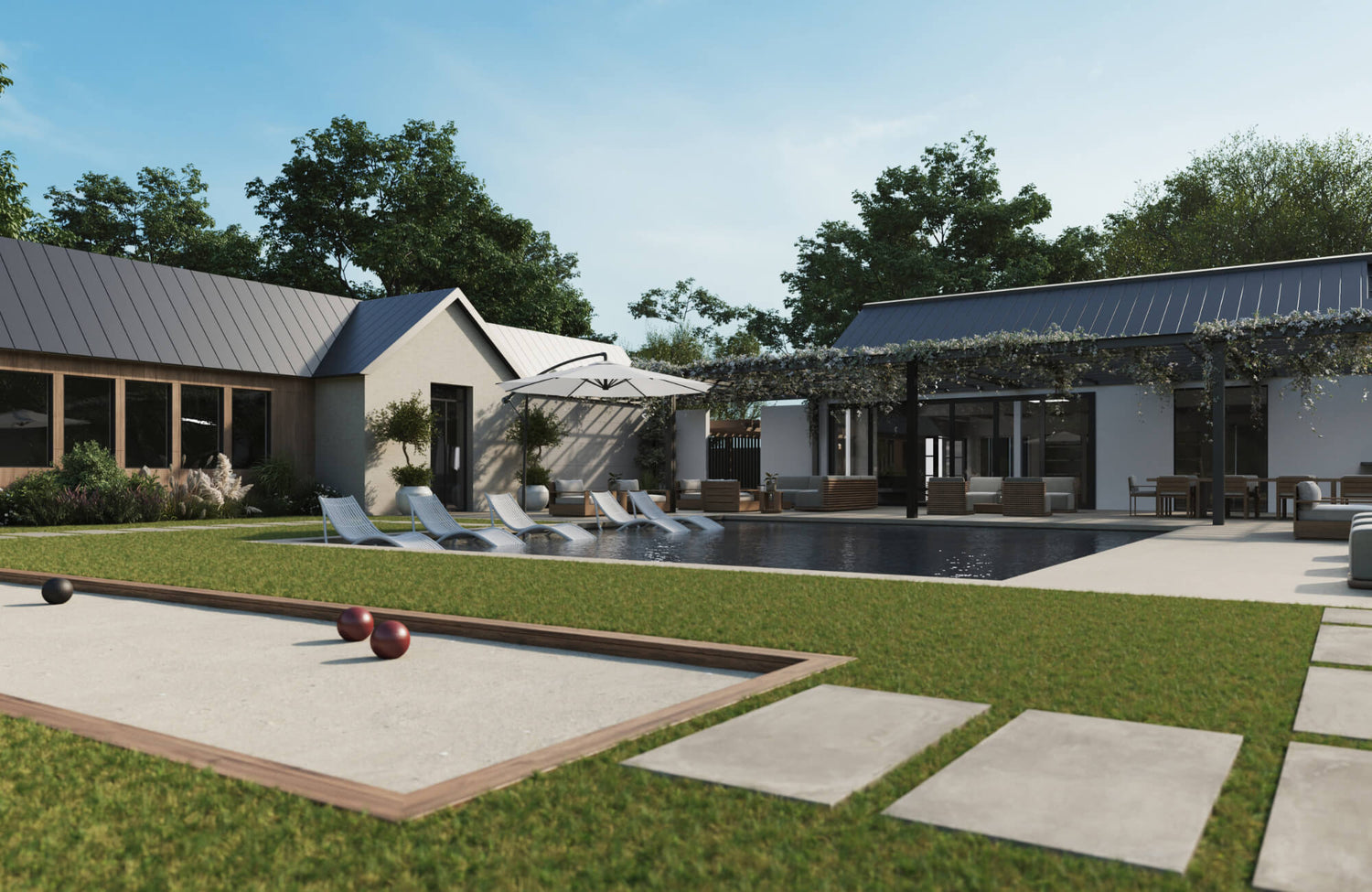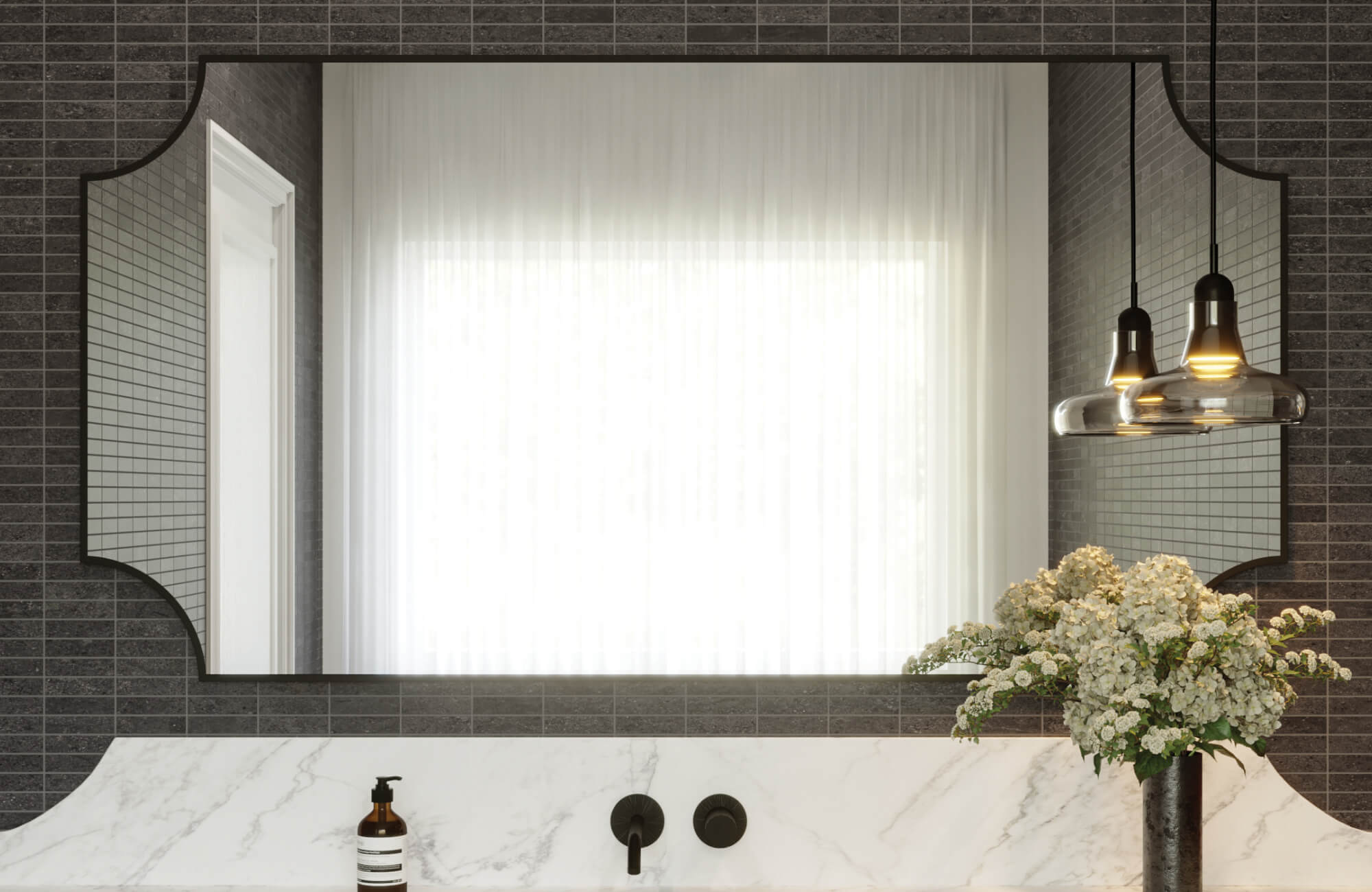Porcelain paving is celebrated for its modern look and exceptional durability, but when it comes to outdoor use, safety often takes center stage. The real question isn’t just if porcelain is slippery, it’s when and why. Slip resistance depends on more than just the tile itself; factors like finish type, installation slope, drainage, and even seasonal debris all influence how it performs underfoot.
Many outdoor-rated porcelain tiles are engineered with textured surfaces and R11+ slip ratings, designed to handle wet conditions in areas like patios, pool decks, and garden paths. Still, product specs are only part of the equation. From site preparation to maintenance routines, every detail matters. In this article, we’ll break down what affects porcelain paving’s slip resistance and how to make informed, safety-conscious choices without compromising on design.
Understanding Slip Resistance in Paving Materials
To understand how porcelain paving performs underfoot, especially in outdoor settings, it's important to start with the basics of slip resistance. From its role in everyday safety to how it's measured around the world, these fundamentals lay the groundwork for making smart, informed choices.
What is Slip Resistance and Why Does it Matter?
At its core, slip resistance refers to a surface’s ability to reduce the risk of slipping, particularly when exposed to water, oils, or other contaminants. This quality is essential in both residential and commercial environments, where it contributes not only to day-to-day safety but also to compliance with building regulations, such as the standards set by the Americans with Disabilities Act (ADA).
Several factors influence a tile’s slip resistance, including its surface texture, microstructure, and finish. Together, these characteristics affect the Coefficient of Friction (COF), a key metric used to gauge how much grip a material provides.
Surfaces with low slip resistance can pose serious hazards in moisture-prone areas like patios, pool decks, and entryways. Therefore, choosing materials that retain grip under real-world conditions is critical for reducing liability and preventing injury.
International Standards and Ratings for Slip Resistance
To evaluate slip resistance objectively, various international testing standards are used, each with its own rating system and methodology. For instance, in Europe, the R-rating (Ramp Test) is a common metric. It classifies surfaces from R9 to R13, based on the angle at which a person begins to slip on an oil-coated incline. For outdoor applications, an R11 or higher rating is typically recommended.
Meanwhile, in the United States, the Dynamic Coefficient of Friction (DCOF), governed by ANSI A326.3, is the industry standard. This test simulates wet walking conditions using a rubber sensor to measure how much friction a tile provides. A minimum value of 0.42 is required for interior wet areas, though higher values are advisable for outdoor and sloped surfaces.
Beyond these, other recognized systems include the Pendulum Test Value (PTV), used widely in the UK and parts of Asia, and the Wet Barefoot Ramp Test, which is particularly relevant for poolside and spa areas. While testing methods vary, all serve a common purpose: to assess a surface’s ability to maintain traction under real-life conditions.

Factors Influencing Porcelain Paving's Slipperiness
While porcelain is engineered for strength and style, its slip resistance in real-world conditions depends on more than just its rating. Factors like texture, moisture exposure, and even how the tiles are laid all significantly impact how safe the surface feels underfoot.
Surface Texture and Finish
One of the most important factors affecting slip resistance is the tile’s surface finish. Porcelain is available in polished, matte, grip, and structured textures, each offering different levels of traction. Polished tiles, though visually striking, are smoother and more slippery, making them ill-suited for outdoor use. By contrast, matte, grip, and structured finishes incorporate microtexturing or raised surfaces that increase friction and improve safety underfoot.
Moreover, modern manufacturing techniques like inkjet printing and laser etching allow manufacturers to replicate natural materials while ensuring a consistently textured surface. These enhancements directly influence slip resistance ratings, including the DCOF and R-rating, two key metrics for evaluating outdoor tile performance.
For example, Edward Martin’s Ramsey 24x24 Grip Porcelain 2cm Paver Tile in Putty showcases this balance. As shown in the photo above, it combines a modern neutral tone with a slip-rated finish, making it a reliable and attractive choice for patios, pathways, and firepit seating areas.
Presence of Moisture and Contaminants
Even tiles engineered for slip resistance can become slippery when environmental contaminants are introduced. Substances like moisture, algae, moss, fallen leaves, and oily residues can form a film that reduces surface friction, especially in shaded or poorly drained areas.
To prevent this, routine maintenance is essential. This includes removing debris and using pH-neutral, non-oil-based cleaning products to preserve the tile’s grip. Contaminants that repel water, such as sunscreen or soap, pose an even greater risk as they compromise traction on both smooth and textured finishes.
That’s why tiles with an R11 rating or higher, tested in wet conditions under standards like ANSI A326.3, are recommended for outdoor spaces prone to moisture. A strong performer in such environments is Edward Martin’s Dawson 24x48 Grip Porcelain 2cm Paver Tile in Dune. Its extended format and grip surface, combined with wide joint spacing, help manage both water flow and surface cleanliness.
Angle of Installation and Slope
Alongside texture and maintenance, slope is a key factor in controlling slip resistance. A gradient of 1–2% (or 1:80 to 1:50 ratio) is typically ideal for promoting water runoff. Too much slope may cause water sheeting, while too little can result in pooling, both of which increase slip risk.
To achieve optimal slope, proper site planning and sub-base preparation are essential. Installers should also pay attention to transitional zones, such as those between a tiled area and adjoining surfaces like turf or decking, to avoid uneven grade changes. In sloped areas, directional tiles with linear grooves can be laid perpendicular to foot movement to further enhance grip.

Choosing the Right Porcelain Paving for Outdoor Safety
Choosing the right porcelain tile isn’t just about what looks good, it’s about what works best for your space and how it will perform over time. As you weigh your options, it’s essential to consider how safety, usage, and style all intersect in the decision-making process.
Identifying Slip-Resistant Porcelain Tiles
As a starting point, outdoor safety begins with selecting tiles that meet industry-recognized slip resistance standards. Look for R11 or higher under the DIN 51130 ramp test, or a DCOF ≥ 0.60 under ANSI A326.3, both of which assess performance under wet, real-world conditions.
In most cases, slip-resistant tiles will feature grip, textured, or structured finishes. While labels like “anti-slip” or “outdoor” are helpful, always cross-reference these claims with actual test data. Additionally, opt for full-body porcelain, which offers better wear resistance over time compared to glazed alternatives.
For example, the Carter 24x48 Grip Porcelain 2cm Paver Tile in Stone is a top choice for patios and walkways. As featured above, its natural tone and elongated format pair a refined aesthetic with slip-rated safety.
Considerations for Busy and Wet Areas
Moving into active and moisture-prone zones, such as pool decks, entryways, and garden paths, your tile selection must accommodate greater wear and exposure. In these environments, tiles with deep texturing or structured relief help maintain reliable traction, even when surfaces are wet.
Moreover, tile format and joint spacing are key factors that influence overall performance. Rectified edges allow for tighter grout lines and a sleek appearance, while wider joints promote better water drainage. In colder regions, always verify the tile is frost-resistant with ≤ 0.5% water absorption, reducing the risk of cracking from freeze-thaw cycles.
A practical choice here is Edward Martin’s Wren 24x24 Grip Porcelain 2cm Paver Tile in Dune. Its muted tone blends effortlessly with natural landscapes, while its slip-resistant finish supports daily use in active, outdoor areas.
Aesthetics vs. Safety
While safety is non-negotiable, design is equally important. Fortunately, modern porcelain pavers offer aesthetic versatility without compromising function. Today’s anti-slip finishes convincingly replicate materials like stone, wood, and concrete, offering subtle textures that enhance both beauty and grip.
To achieve the right balance, focus on finishes that provide both surface friction and design depth, such as matte stone effects with anti-slip glazing or wood-look tiles with raised grain. Avoid polished or glossy finishes in outdoor spaces, as they tend to perform poorly when wet. Additionally, consider lighter tile tones to enhance visibility and reduce heat absorption, especially in shaded or low-light areas.
To streamline your design process, Edward Martin’s Augmented Reality (AR) Visualization Tool allows you to preview different tile styles in your actual space. Simply tap “View in Your Space,” point your device, and see the tile come to life. You can, then, order samples for hands-on review.
Finally, plan your space in functional zones. Use high-slip-resistance tiles near water features or entrances, and reserve smoother textures for covered dining areas or less-exposed spaces. This thoughtful zoning strategy ensures your outdoor environment remains cohesive in design and responsive to safety demands.

Installation Techniques and Maintenance for Optimal Slip Resistance
Even the best slip-rated porcelain tile won’t perform as intended without the right installation and upkeep. From how it's laid to how it's maintained, every stage contributes to the safety and longevity of your outdoor surfaces.
Proper Installation Practices
First and foremost, effective installation begins with setting the correct slope to encourage proper water runoff. A 1–2% gradient (1:80 to 1:50 ratio) is recommended to prevent standing water and related slip hazards. Conversely, too steep a slope can lead to water sheeting, particularly on smoother tiles, increasing the chance of slipping.
The substrate and mortar system must also support long-term stability. Use a polymer-modified, frost-resistant thin-set mortar specifically formulated for exterior conditions. In pedestal or dry-lay systems, such as rooftop terraces, ensure consistent leveling to prevent rocking. Voids beneath the tile surface can lead to cracking or instability, both of which undermine traction.
Additionally, grouting and joint materials impact overall performance. Choose epoxy or resin-based grouts for enhanced durability and weather resistance. For larger joints, permeable jointing compounds improve drainage and help reduce the growth of moss or algae, two common causes of surface slipperiness.
For best results and to avoid costly errors, it’s always recommended to hire experienced professionals who understand the technical requirements of exterior tile installation.
Effective Cleaning and Maintenance Routines
Once installed, maintaining slip resistance requires consistent care. Establish a regular cleaning routine, particularly in shaded or moisture-prone areas where algae, moss, and organic debris tend to accumulate and create slick surfaces.
For routine cleaning, use pH-neutral, non-film-forming cleaners that won’t damage the tile finish or leave residue. Avoid acidic or oil-based solutions. When needed, use a low-to-medium pressure washer to clean textured surfaces, but be mindful to direct water away from grout lines to avoid erosion.
During colder months, avoid using traditional de-icing salts, which can deteriorate grout and cause unsightly efflorescence. Opt instead for non-corrosive de-icing products, and remove snow and ice promptly. Around pools or spas, occasional degreasing is also advisable to eliminate slippery residues from sunscreen and body oils.
To avoid issues over time, always consult the manufacturer’s care and maintenance guidelines to ensure product longevity and preserve performance.
Long-Term Strategies for Enhancing Slip Resistance
Over time, outdoor surfaces may gradually lose traction due to wear or environmental buildup. To counter this, consider applying anti-slip treatments, formulas that chemically increase surface roughness without altering the tile’s appearance. These are especially useful in areas that see changing use patterns or heavy footfall.
In addition, conduct seasonal inspections to detect early signs of joint erosion, tile shifting, or moss growth. Prompt maintenance helps preserve both safety and aesthetics. In particularly active zones, rotating or replacing worn tiles can help maintain a consistent level of grip across the surface.
Finally, encourage simple, preventive habits to extend slip resistance. Sweeping away debris, managing water runoff, and placing outdoor mats at entrances can all contribute to a safer, more durable outdoor space.
Safety Meets Style in Porcelain Paving
Ultimately, porcelain paving offers more than visual appeal, it delivers reliable performance when slip resistance is considered from the beginning. By taking into account factors like surface texture, drainage, slope, and maintenance, you can design outdoor spaces that are not only beautiful but also built for safety.
Whether you’re designing a new patio or refreshing a well-used walkway, making informed, detail-oriented choices leads to better outcomes. For expert assistance, connect with the team at Edward Martin to find the slip-resistant porcelain tile that’s right for your space.








